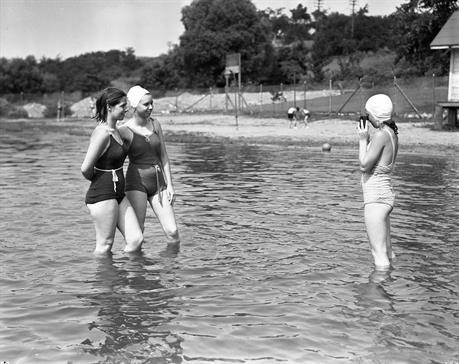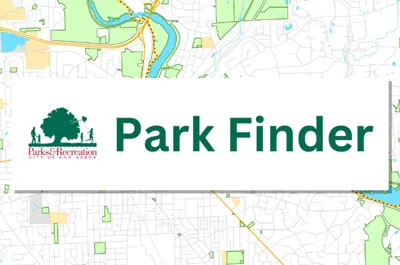
History
Ann Arbor's city parks sit on the ancestral and traditional homelands of several indigenous Native peoples. Read a land acknowledgement from the city and learn more about the early history of the land here.
Erected in 1898, the first ‘livery’ on the Huron River in Ann Arbor was the U of M Boat house. Despite the name, it was a private enterprise. Built by Paul G Tessmer, the boat house was located on the North Main Street edge of Argo Pond. Tessmer had 160 canoes, all of them built by himself, and 40 rowboats for rent.
In 1914 the Edison Company, which had acquired the waterpower rights on Argo Pond, rebuilt the Argo Dam. The beach was a gift from Detroit Edison which had bought the present Argo Dam in 1905 to generate electricity. In 1917, the company offered to develop the beach if the city would pay for its upkeep. The city accepted the offer, and Edison trucked in loads of sand and built a pier, three docks, and a beach house. The city paid a nominal rent of $1 a year before eventually buying the facility in 1938 for $100. The docks were placed in increasingly deeper water—the first at four feet, the next at about eight feet, and the last at twelve feet. Swimmers had to pass proficiency tests to go out to the deeper docks. The last dock had a tall tower, about ten feet. When people wanted a break from swimming, the beach had a volleyball court, horseshoe courts, a slide, and a grassy place under a willow for picnics
The casino inside was famous for its collection of coin-operated orchestrions, melodeons, and other antique mechanical music boxes. In 1936, when Detroit Edison drained Argo Pond to repair the dam, the city took the opportunity to improve the beach, cleaning the river bottom of debris, deepening it, and bringing in clean sand. The next winter the city built an island dubbed "Clever's Folly" after alderman Arbie Clever, who had pushed for the beach improvements. Clever's Folly is now overgrown, and birds nest where local teens once sunbathed. The beach closed for good at the end of the 1948 season. The buildings at the beach were demolished four years later.
At the end of the 50s, the business became Wirth's Canoe Livery, owned by Jack Wirth. In 1958, Jack earned the city's citation for heroism as a result of rescuing a 15 year old boy who fell from the train tracks into the Huron River. In 1964, a massive storm passed over Ann Arbor and heavily damaged Wirth's Livery. In 1970 the City of Ann Arbor bought the property from Jack and Barbara Wirth. In April, 1971 the Ann Arbor parks department constructed the Argo Park Canoe Livery, a bit upstream from this site.




















